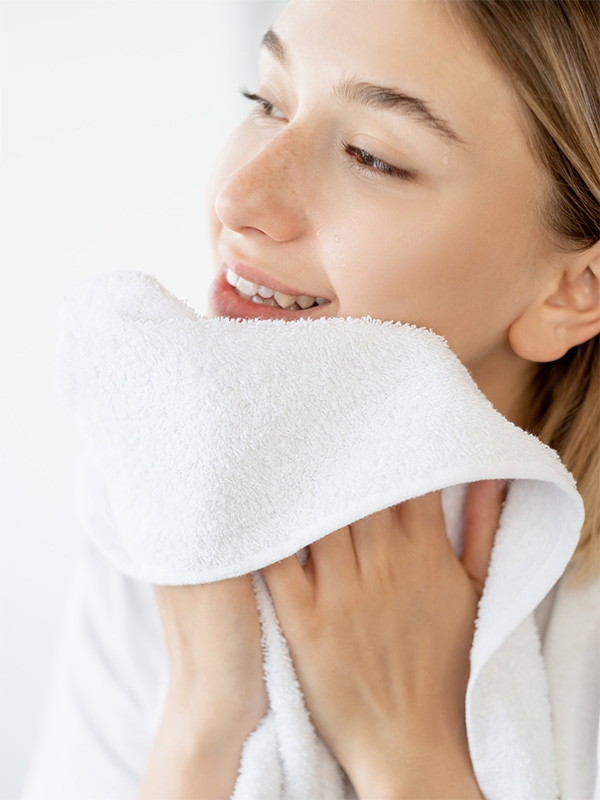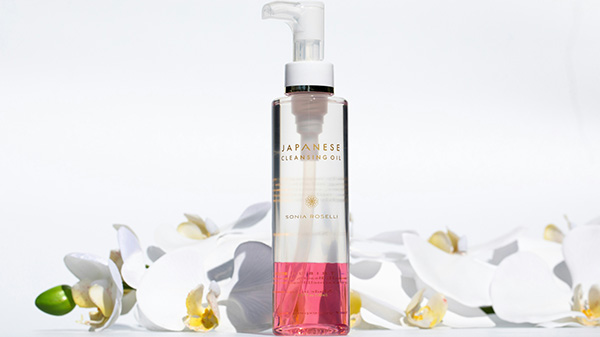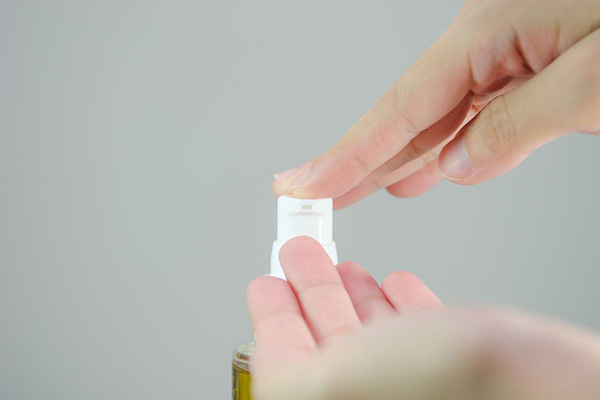In the ever-evolving skincare landscape, a timeless technique is gaining renewed attention – oil cleansing! While using oil to cleanse the skin may seem counterintuitive, the oil-cleansing method has been cherished for centuries across various cultures. Oil cleansing is more than just a passing trend! It's a comprehensive skincare approach that strives to harmonize cleanliness and nourishment.
In this blog post, we'll share everything about the oil cleansing method and how it fits into a comprehensive skincare routine and leave your skin healthy.
What Is Oil Cleansing?
Oil cleansing is a skincare method that uses natural plant-based oils to cleanse the face and remove impurities. The fundamental concept behind this technique is the principle that "like dissolves like." Put differently, oil is especially adept at breaking down and eliminating oil-based impurities!
When the cleansing oil is applied to the skin and massaged, it binds with the excess oil, makeup, sunscreens, and grime on the face, lifting them away from the skin's surface. It then replaces all of the dirty oil with good, natural oils.
Utilizing essential oils for oil cleansing is an option, but diluting them with carrier oil before applying them to your face is vital. It's crucial never to apply essential oils directly to the skin, particularly the delicate facial skin. Given their high concentration, essential oils can lead to adverse reactions. The oils used in this method are whole and often seed-based. Essential oils belong to a different category of oils.
To perform oil cleansing, individuals typically apply a specific oil blend to their dry face, gently massage it in, and then use a warm, damp washcloth to wipe away the oil and impurities gently. This leaves the skin cleansed without disrupting its natural moisture barrier!
In contrast to facial soap or detergent cleansers, oil cleansers do not damage your skin's natural lipids. This method is believed to leave the skin clean and nourished, even out your skin tone and balance, without stripping away its natural oils.
What Are The Benefits Of Oil Cleansing

Oil cleansing has emerged as a skincare technique with many benefits, appealing to various skin types and concerns. Here are some benefits of using oil for cleansing your skin:
Effective Makeup Removal
This skin care method effortlessly removes even the most tenacious makeup! The natural oils used dissolve makeup products, including waterproof ones, without abrasive scrubbing, resulting in a gentle yet thorough makeup removal process.
Deep Cleansing
Oil cleansing delves deep into the pores, dissolving sebum and impurities that can lead to clogged pores and acne breakouts. Compared to traditional cleansers, it offers a more thorough and effective cleansing process.
Balancing Oil Production
Surprisingly, oil cleansing can assist in regulating oil production in the skin! Removing excess sebum without stripping the skin's natural oils can prevent the skin from overcompensating by producing even more oil. This equilibrium can result in a more harmonious complexion.
Preservation of Skin Barrier
Unlike conventional cleansers that can be harsh and stripping, cleansing your skin with oil is gentle. It efficiently cleanses without disrupting the protective barrier of the skin. Preserving this barrier is vital for maintaining skin health and resilience.
Nourishment
Many of the plant-based oils commonly used in oil cleansing are rich in antioxidants, vitamins, and essential fatty acids. These natural compounds nourish the human skin microbiome, providing essential nutrients for a healthy, radiant appearance while keeping your skin hydrated.
Reduction in Skin Sensitivity
Oil cleansing can be a game-changer for sensitive or dry skin individuals. It minimizes the potential for irritation and dryness, making it an excellent choice for those who typically find traditional cleansers too harsh.
Improved Skin Texture
Over time, regular oil cleansing can result in smoother, softer skin with a more even texture. It can aid in reducing the appearance of rough patches and blemishes, contributing to an overall improved complexion. A regular oil cleanse has even been shown to reverse aging skin!
How To Choose A Cleansing Oil

Choosing the right is crucial in adopting an effective oil cleansing routine! Given the many options, it's crucial to consider various factors to ensure you choose a product that aligns with your skin type and specific skincare needs. Here's an in-depth exploration of how to choose the ideal cleansing oil:
Skin Type
Understand your skin type first and foremost. Whether you have dry, oily, combination, sensitive, or acne-prone skin significantly impacts the type of oil that will work best for you. Various oils possess distinct properties that cater to specific skin needs.
Dry Skin: Those with dry skin should opt for moisturizing olive oil. Olive oil is enriched with vitamins and antioxidants and boosts hydration. Consider adding coconut oil or avocado oil for an extra dose of moisture!
Sensitive Skin: Avoid castor oil! Castor oil is very astringent, which can exacerbate skin dryness. Instead, choose gentler options to oil cleanse, like jojoba oil or rosehip oil. These are less likely to irritate. Grapeseed and almond oils are ideal oils to reverse skin damage. Ingredients like chamomile or calendula-infused oils are excellent choices for soothing sensitive skin.
Acne-Prone or Oily Skin: Oily and acne-prone skin responds best to sunflower oil, jojoba oil, and castor oil. These oils can assist in controlling acne and balancing the skin's natural oil production. Argan oil also regulates sebum production, promoting clearer skin. Marula oil is an excellent non-greasy alternative for oily skin care. For blemish-prone or acne-prone skin, opt for oils with antibacterial properties! Oils like tea tree oil or neem oil can help address such concerns effectively.
Ingredient List
Thoroughly scrutinize the ingredient list, particularly if purchasing premade oil cleansers! Buying a special pre-mixed oil cleanser is unnecessary, as regular plant oils work well independently. Opt for cleansing oils that contain pure, natural oils without added fragrances, preservatives, or synthetic additives. The simpler the list of oil cleanser ingredients, the less likely the oil cleanser will irritate skin or cause breakouts! Non-comedogenic oils are preferable as they are less likely to clog pores. For this reason, coconut oil is not advisable for skin care applications.
Texture
Consider the oil's texture. Lighter oils like grapeseed or sunflower oil suit those who prefer a non-greasy feel. In contrast, thicker oils like castor oil can be better for deep cleansing of dead skin cells, making them ideal for double cleansing routines.
Ethical Considerations
Some consumers prioritize ethical considerations when choosing a facial cleanser, such as sustainability and cruelty-free practices. Research skin care industry brands that align with your ethical values to make a conscious choice.
Double Cleansing
If you plan to use the cleansing oil as part of a double cleansing routine, consider one with emulsifying properties. These oils can effectively remove makeup and sunscreen and rinse off more easily with water.
Price Point
Skincare budgets can vary widely. Fortunately, high-quality cleansing oils are available at different price points. Choose one that meets your needs and aligns with your budget.
How To Use A Cleansing Oil

Basic Oil Cleansing Method
The basic oil cleansing method is a skincare technique that uses natural oils to cleanse the skin effectively. Here is the breakdown:
- The first step is choosing an appropriate oil or oil blend for your skin type. Different oils have various properties, so matching the oil to your specific skin care needs is essential. You can also create custom blends to address particular concerns.
- Start with dry hands and a dry face. Dispense a small amount of the selected oil or oil blend into the palm of your hand, adjusting the quantity based on the product and your skin's needs. Typically, a few drops or pumps are sufficient.
- Gently massage the oil onto the dry skin using circular motions. Take your time during this step to ensure that the oil thoroughly breaks down makeup, sunscreen, and dead skin cells. Massaging also helps to improve circulation and relax facial muscles.
- After massaging, wet your hands with a bit of water and continue to massage gently. The water combines with the oil, creating a milky emulsion that further loosens impurities and makeup.
- Rinse your face thoroughly with warm water. At this stage of your oil cleanse, it's important to ensure that all oil residue and dissolved impurities are removed! If you prefer, you can use a washcloth.
- Gently pat your face dry with a clean, soft towel. After oil cleansing, you can proceed with the rest of your skincare routine, including toner, serum, moisturizer, and any other products you regularly use.
Korean Double Oil Cleansing Method
The Korean double-oil cleansing method includes oil cleansing as its initial step. It is renowned for its thoroughness in removing makeup, sunscreen, and impurities while promoting radiant, clear skin. Here's an overview of the Korean way:
- After completing the oil cleanse steps above, it's time for the water-based cleanser. Choose a mild cleanser that suits your skin type.
- Dispense a suitable amount of the water-based cleanser and create a lather in your hands. Apply the foam or lather to your damp face.
- Delicately massage the water-based cleanser onto your face using circular motions. This cleanser will effectively remove any remaining impurities, residue, and emulsified oil from the first step.
- Thoroughly rinse your face with warm water to completely remove the water-based cleanser. Ensure no residue is left on your skin, and if needed, use a damp washcloth to wipe your face gently.
- Pat your face dry gently with a clean, soft towel. After the double cleansing process, your skin is ready for the next steps in your skincare routine, which may involve toner, serum, moisturizer, and any other preferred products.
Tips For Your Oil Cleanse
- Select a cleansing oil that suits your skin type and addresses your specific concerns.
- Be gentle while massaging the nourishing oils onto your skin! You want to avoid unnecessary friction or tugging in order to reap the full skin barrier repair effects.
- Be sure to rinse the cleansing oil thoroughly to prevent any residue on your skin.
- If you have sensitive eyes, be cautious when removing eye makeup with cleansing oil, as it may temporarily blur your vision.
- Before trying a new cleansing oil, perform a patch test to check for adverse reactions. Apply a small amount of the product behind your ear or inside your wrist to conduct the patch test. Leave it on for 24 to 48 hours, observing for any signs of redness, irritation, itching, or other adverse reactions before using it on your face.
Is Oil Cleansing Suitable For All Skin Types?
While the oil cleansing method works for various skin types, choosing the appropriate oil or oil blend that suits your specific skin needs is essential. For instance, dry skin may benefit more from hydrating oils such as almond, olive, or avocado oil. In contrast, individuals with oily skin may succeed with lighter oils like grapeseed or jojoba oil.
Will Oil Cleansing Make My Skin More Oily?
Oil cleansing works to balance the production of oils in the skin! It is a misconception that this cleansing method will create oily skin. Dermatologists recommend oil cleansing for those who struggle with excess sebum production! When you use an oil cleanser effectively, it dissolves and removes excess oil and impurities without overstripping your skin. Consequently, your skin may produce less facial oil over time.
Can Oil Cleansing Cause Breakouts?
When starting oil cleansing, it's possible to experience minor breakouts initially. This is often called the "purging" phase, where clogged pores are cleared. However, if you encounter prolonged or severe breakouts, it may indicate that the oil or oil blend you're using is unsuitable for your skin type, and you should reconsider your choice. Coconut oil, for example, should be avoided.
Do I Need To Use A Second Cleanser After Oil Cleansing?
While the double oil cleansing method is popular, it's not mandatory. Whether to follow up with a second cleanser depends on your preference and specific skin needs. A second cleanser helps remove all oil and impurities, making it a common choice among skincare enthusiasts.
How Often Should I Cleanse Oil?
Oil cleansing can vary from person to person. Many individuals incorporate it into their nightly skincare routine to remove makeup and sunscreen. However, the frequency depends on your skincare preferences and whether you wear makeup or sunscreen regularly.
Will Oil Cleansing Remove My Sunscreen Effectively?
Yes, the oil cleansing method is highly effective at removing sunscreen. Sunscreen products are often oil-based, and oil cleansing is specifically designed to dissolve and break down oil-based substances, ensuring thorough removal from your skin.
